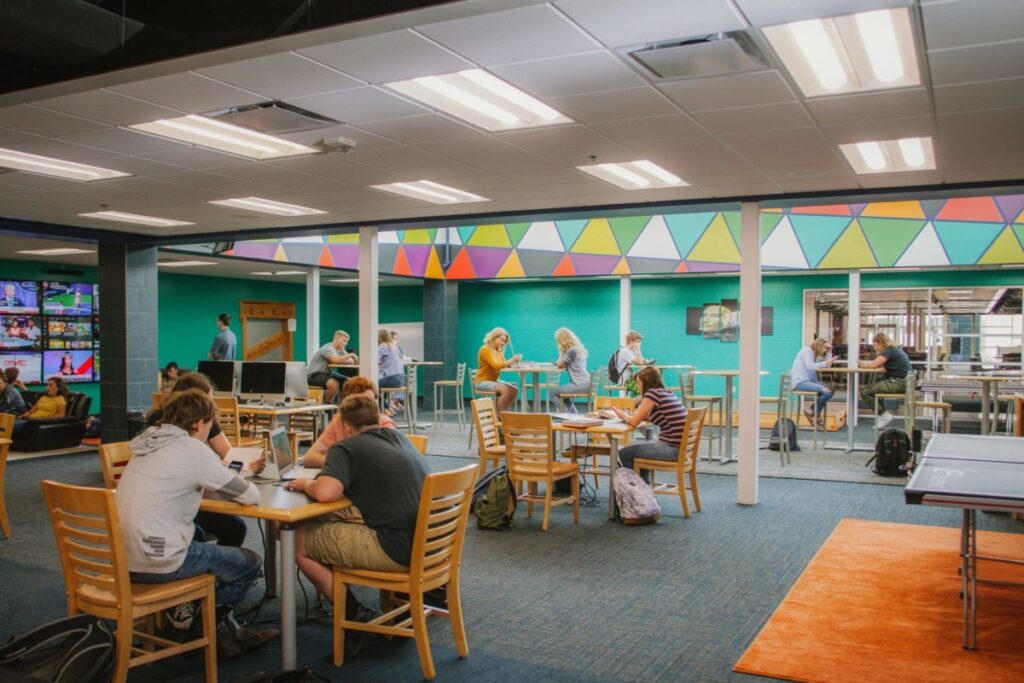The pandemic didn’t just disrupt schooling in America. It threw a glaring spotlight on all that was unequal and archaic about learning in our nation. And no one—not administrators, not teachers, not parents, or even students—could un-see what had been revealed.
So from small towns to large cities, educators around the U.S. spent much of 2020 and 2021 not just coping with what was but ambitiously discussing what urgently needs to be. We’ve reached a watershed moment that many districts are determined not to squander.
The Remaking Tomorrow report, released in August 2020, put it clearly: “Out of necessity, the barriers to change have been weakened in ways that make education transformation seem ever more plausible.”
This is an exciting time for people who were working toward even change before the pandemic, says Dr. Robert Gildea, superintendent of schools in Hollidaysburg, Pa., a rural community about two hours east of Pittsburgh. “We know that we have the ability now to transform our educational system.”
But while teachers and administrators have been hungry for guidance on how they might build a better tomorrow for their students, they are also exhausted.
“We are coming to the conclusion of probably the most difficult year that we’ve ever experienced in our lifetimes in education,” says Gildea. So the announcement of bold, new initiatives to reshape America’s schools can be both inspiring and potentially daunting.
Dr. Bille Rondinelli and Dr. Bart Rocco, both fellows at the Pittsburgh-based Grable Foundation, had that concern in mind as they began speaking with educators about the newly created Western Pennsylvania Learning 2025 Alliance.
They reassured superintendents that this initiative, built on a framework created by AASA’s Learning 2025 National Commission on Student-Centered, Equity-Focused Education, will fuel the work they’re already pursuing rather than pile on top of it.
“We don’t want this to be an add-on,” Rondinelli says. “It should be something that supports what people are already working on in their districts.”
Learning innovation has been a priority for more than a decade in Western Pennsylvania. Many local districts participate in the Remake Learning network and are deep in the middle of redesigning their curriculum, instructional approaches, and even their school buildings.
“In all this context of change, doing the AASA Learning 2025 cohort really makes a lot of sense,” says Brian White, superintendent of the Butler Area School District, north of Pittsburgh, which will participate in the Western Pennsylvania Learning 2025 Alliance.
“It really is about empowering people to take responsibility for the education of their community,” White says, “not issuing dictates on how learning should look in each individual classroom.”

AASA, which is the national school superintendents association, has designed Learning 2025 to function as a set of “guardrails for specific change, while also empowering districts and schools to tailor plans to the needs of their learners, educators, and communities.”
Their vision for systemic change, detailed in a report issued last March titled An American Imperative: A New Vision of Public Schools, focuses on three key areas:
- Systemic school redesign must happen within an intentional, relationship-based culture that is whole-learner focused, future-driven, and leaves no learner marginalized.
- Learning must reorient around a social-emotional-cognitive growth model, with data, planning, and evidence of learning all operating in a feedback loop to continually personalize learning and promote growth.
- Resources must be unlocked: Broadband must be a public utility and high-quality early learning must prepare all learners. Community resources must be aligned to meet learners’ needs. And a diverse educator pipeline must be built.
One strategy for realizing this vision is to have communities that are making progress in these areas serve as “lighthouse districts,” sharing and demonstrating their best practices.
“These districts that are really doing great work around these initiatives can serve as models that others can follow,” Rocco says.
To develop this vision and the resulting framework, AASA’s national commission brought together thought leaders from education, business, community organizations, and philanthropy, including Gregg Behr, co-chair of Remake Learning and executive director of The Grable Foundation.
Behr and his team at The Grable Foundation saw tremendous value in helping school districts in western Pennsylvania reap all the benefits of networking and sharing ideas with the national participants involved with Learning 2025. They designed the Western Pennsylvania Alliance to combine that national networking with direct connections among schools locally.
To ensure that even districts with limited resources can participate, Grable is subsidizing year-one fees for school districts located in southwestern Pennsylvania that applied to participate. Thus far, about 30 districts have joined the Alliance.
“As school leaders face incredibly hard questions at this very moment–trauma, injustices, division–this moment is also our best chance to remake our schools for what our young people need them to be so that they might lead prosperous futures,” Behr says. “This new alliance of western Pennsylvania school districts will lead our region forward.”
Grable is also offering a range of benefits, services, and supports, including consultation with Rondinelli and Rocco, both of whom are former superintendents. Other local and national educators will be involved as well, including Dr. Mort Sherman and Dr. Valerie Truesdale from AASA. Rondinelli says their expertise may be instrumental in helping districts in Pennsylvania achieve their goals.
In addition, Grable is offering funding so that school leaders can attend AASA’s National Conference on Education in Nashville (Feb. 2022) and the Learning 2025 Summit in Washington, DC (June 2022).
All of these experiences will hopefully lead to valuable strategies and ideas, and Grable is looking to fund those as well: The foundation is open to awarding grant funds to school districts to test or implement strategies that arise from Learning 2025 and/or from ideas advanced by the Remaking Tomorrow report and the subsequent publication What Comes Next?.
An in-person kickoff event on Aug. 5 will bring together the more than two dozen members of this potentially game-changing Alliance.
“We’re going to be a central core of districts in the country that are supporting this national initiative, which is kind of exciting,” Rocco says.
For many, the subsidy from Grable is bringing this unique opportunity within reach.
“We’re not a real affluent school district,” Gildea says of Hollidaysburg. “So we’re pretty limited in what we can do.”
In the past, he says, Hollidaysburg has been unable to fund visits to national conferences or trips to see school districts out of state. But with Grable’s assistance, they’re fully on board for participation in Learning 2025.
Gildea is hopeful that all of the districts in the Alliance embrace this opportunity to make huge strides within the next four years.
“I hope we have a nice cohort,” he says, “so that we can really make a lasting impact on the way we deliver instruction to our kids.”
